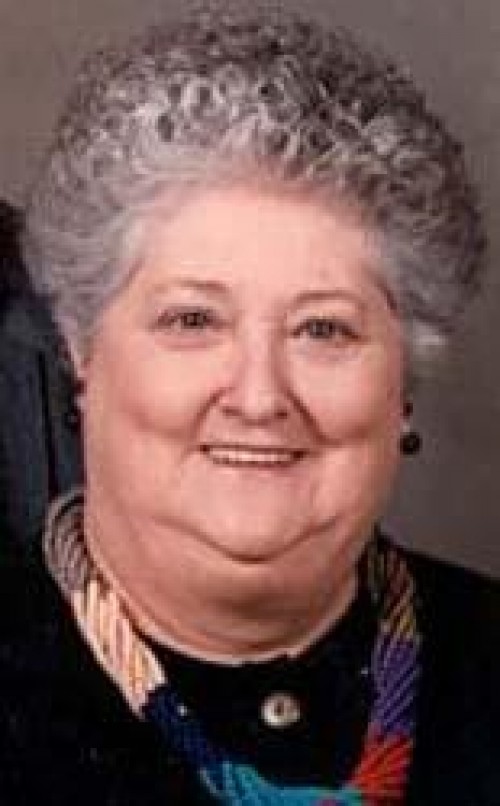Preston Joseph Hebert Sr.
October 28, 2008
Olive "Nookie" Sonnier Pitre
October 30, 2008October brings with it traditional autumn colors – orange, gold, brown and plum.
But perhaps the most brilliant and important addition to the October palette is the pink of National Breast Cancer Awareness Month, designated to remind us to take charge of our breast health to prevent this disease.
Pink seems to be everywhere. This heightened awareness of the need for breast cancer research that will finally lead to a cure is the work of tireless advocates over many, many years.
A cure can’t happen without detection, and I urge you to do your part and get your mammogram!
I also urge you to sign up for a mammogram reminder and encourage your friends and family to do the same.
As an additional incentive, I asked my friend Pat Hoffman, a breast cancer survivor, to share her experience.
“I was diagnosed in June of 2004. This happened through my yearly screening mammogram.
“I had a clean mammogram in June of 2003. In mid-June, I had a needle biopsy, which confirmed that I had breast cancer and would need a lumpectomy and radiation.
“The pathology report concluded that the margins of the tumor they had removed were not cancer free and a mastectomy would be necessary.
“Fortunately, the margins this time were clean and the cancer had not spread outside of the breast. I followed up with three months of chemotherapy.
“I will continue a daily dose of Arimidex for five years.
“Had I put off that mammogram in 2004 my prognosis would have certainly been much worst. My tumor was 4.1 cm and not one of seven doctors who examined me was ever able to feel this tumor.
“There is no doubt in my mind that I owe my life to a timely mammogram.
“October is the time when we are reminded that if you are due for a mammogram – just do it. It may save your life.”
The good news is that significant progress has been made since the October awareness campaign was first launched more than twenty years ago. Millions of dollars have been raised for breast cancer research, and the rate of women dying from this disease has been dropping.
Today, there are over 2 million women living in the United States who have been treated for this disease. When breast cancer is detected early, the five-year survival rate is 98 percent.
However, not all the news is good. Breast cancer is the second leading cause of death from cancer in American women. In Louisiana alone 2,840 women will be diagnosed with breast cancer, and 750 women will die from the disease.
However, survival rates could be increased through the use of effective screening tools. The combination of monthly breast self-exams, yearly clinical breast exams, and regular mammograms beginning at age 40 is the best way to detect breast cancer in its earliest and most treatable stages.
Here are specific steps you should take:
• Breast Self-Exam (BSE): Every woman should examine her breasts once a month to check for physical changes.
If you are unsure of how to perform a breast self-exam, ask your health care provider to demonstrate and explain the ideal time to conduct one. It is very important for women to become familiar with their breasts and understand what feels normal.
Start early, beginning at age 20.
• Clinical Breast Exam (CBE): Be sure to ask your health care provider to give you a clinical breast exam each year.
The exam consists of checking the breasts for any changes, lumps, or other possible warning signs of breast cancer through physical touch and appearance.
You should begin having clinical breast exams in your 20’s and 30’s.
• Mammography: Beginning at age 40, all women should have an annual mammogram. It is a good idea to have a baseline mammogram at age 35.
The mammogram is an “x-ray” of the breast and is the most effective method of detecting breast changes that may be cancer, long before physical symptoms can be seen or felt.
It is also important to know that while all men and women are at risk, some women are at a higher risk. Age itself is a risk factor for breast cancer; about 77 percent of the women diagnosed are over the age of 50.
Also at higher risk are women with a family history of breast cancer, women with inherited abnormal genes, women who have previously had cancer in one breast, and obese women with sedentary lifestyles.
Breast cancer is often detected in its earliest stage as an abnormality on a mammogram before it can be felt by a woman or by her health care provider.
The following may occur when a cancer has grown to the point where physical signs and symptoms are present: breast lump or thickening; swelling, redness or tenderness; skin or nipple changes in color or texture; dimpling or puckering of the skin; nipple pain, discharge, scaliness or retraction; and, lumps under the armpit area. If you experience any of these symptoms, see your health care provider immediately.
Some other common sense prevention tips – that are appropriate beyond breast cancer as well – are to eat a low fat diet, exercise regularly, and not smoke. And if you suspect that you are at high risk for the disease, talk to your health care provider. With the strides being made in prevention, there are drugs available to help prevent breast cancer for the higher risk categories.
Let the pink you see this October serve as a reminder to get screened, but be vigilant about prevention all year round.
If you would like additional information on cancer prevention, please visit www.preventcancer. org.








